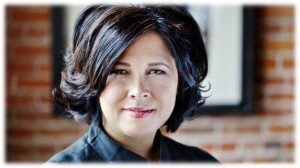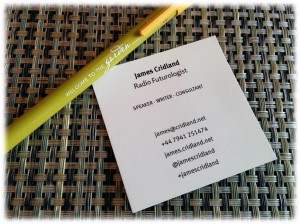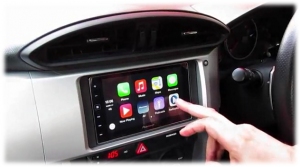“The future ain’t what it used to be.” Yogi Berra
We thought we knew what the future was all about from watching The Jetsons, but most of it never came to pass. Flying cars, robots cleaning up after us, short workdays, and picture phones never got off the ground.
Wait – at least we have FaceTime, right? (But what happened to those short workdays?)
Actually, while predicting the future is difficult as we’ll see once again when the media moves into 2016 prognostications next week, it helps to have research and to know insightful people who can interpret it. Some companies have hired experts to do just that – study the present in order to better understand where their industries are going next year…and beyond.
Did you know Ford has a futurist? Sheryl Connelly has held that position during some of the most tumultuous years for the car business. Forbes calls her “the Faith Popcorn of the auto industry,” and Connelly’s job is to figure out where it’s all headed.
As a result, she attends a lot of conferences, but also spends most of her time reading. She told Forbes’ Dale Buss that “If you don’t like to read, you might not like the job.” She’s focused on STEEP – or social, technological, economic, environmental, and political trends for Ford. That’s a lot of ground to cover.
 You can read Ford’s “Looking Further” study about what’s coming in 2016. It’s colorful, focused, and the kind of analysis we can all use in our future planning whether we’re in the automotive industry or the audio entertainment business. And it’s indicative of how data can help content creators, designers, marketers, and strategists keep abreast of key trends.
You can read Ford’s “Looking Further” study about what’s coming in 2016. It’s colorful, focused, and the kind of analysis we can all use in our future planning whether we’re in the automotive industry or the audio entertainment business. And it’s indicative of how data can help content creators, designers, marketers, and strategists keep abreast of key trends.
In a recent article in The Hollywood Reporter by Michael Walker, Connelly spoke to one of the automaker’s key challenges – the changing value system and mindset of Millennials and their younger brothers and sisters – Gen Z. She noted that in 1978, seven in ten 16 year-olds had a driver’s license. Today, only half of Sweet 16 celebrants can legally drive. For an industry that is dependent on next generations of drivers, that’s a big finding and a daunting challenge.
She also notes that Ford and other automakers have to deal with “shared mobility,” because more Millennials rely on public transit or services like Uber and Lyft. She compares Uber to a contemporary version of hitch-hiking because users can use data to ensure their driver is reliable, trustworthy, and has a strong track record.
Connelly also talks about the ability of brands to create emotional connections with consumers. As we’ve learned in our Techsurveys, key drivers for radio are the emotional benefits stations have the ability to deliver – companionship, mood elevation, escape, and a reflection of the local ethos. As Connelly points out,
“Brands have an obligation to find ways to make their engagement more meaningful. Because there is so much choice out there, the only way to rise above the noise is to do something that touches people on an emotional level.”
That sounds an awful lot like a direct challenge to the radio programmers and managers who read this blog. In a sea of growing competition, it’s that emotional fabric that can be a difference maker.
And maybe you didn’t know that radio h as someone like Connelly in James Cridland. He’s a “radio futurologist” – it’s right there on his business card.
as someone like Connelly in James Cridland. He’s a “radio futurologist” – it’s right there on his business card.
But James has earned his chops, and like Connelly, he’s a thoughtful observer of the world around him. We first met at Convergence several years ago. James brought an international point of view to that conference, showing examples of how many broadcasters outside the U.S. were working together to achieve common goals.
His “speak in one voice” mantra was inspirational to me at a time when radio’s biggest broadcasting companies were all going off in their separate directions. We even wrote a blog post about it, and James was kind enough to appear at our Jacobs Media Summit that year.
As he pointed out back then – and it’s true now – good things can happen when disparate groups work together to pursue a collective goal. The UK’s Radioplayer initiative (profiled in our Radio’s Most Innovative series) is a great example of what can be achieved in a “one voice” world. Now virtually every radio brand, from the BBC’s cadre of outlets to commercial stations use the same streaming unified player, making for an easier consumer experience, while giving every station equal footing to succeed in the digital space.
And that spirit of cooperation has led to early acceptance of Radioplayer in the UK version of Apple’s CarPlay system – a great accomplishment from Radioplayer’s Michael Hill and his team. 
That’s the beauty of gazing into that crystal ball, looking down the road, and bringing the best members of your team together to figure it all out.
Unlike the moronic predictions about Caitlyn, Miley, Donald, and Kim and Kanye that we’ll see over the next several days, accomplished futurists and observers of life around us can bring true value to their companies and their audiences.
If we’re willing to listen to them.
Tomorrow in our last post before the new year, we’ll talk about how the thinking of both Sheryl Connelly and James Cridland might help the radio broadcasting industry have a more peaceful, happy, and prosperous new year.
Here’s to a merry and bright future.
- Why “Dance With Those Who Brung You” Should Be Radio’s Operating Philosophy In 2025 - April 29, 2025
- The Exponential Value of Nurturing Radio Superfans - April 28, 2025
- What To Do If Your Radio Station Goes Through A Midlife Crisis - April 25, 2025





Leave a Reply